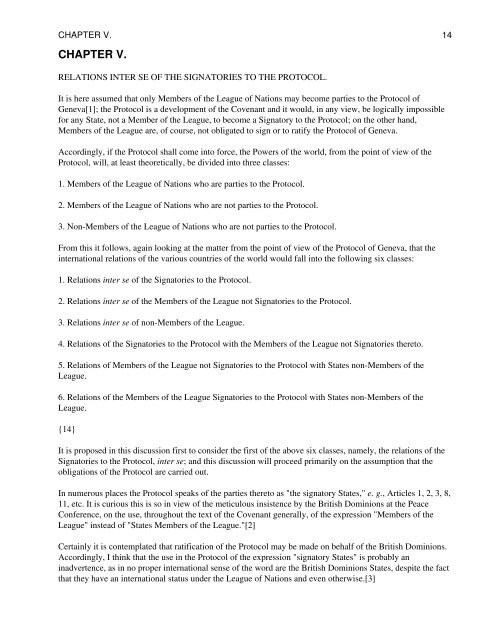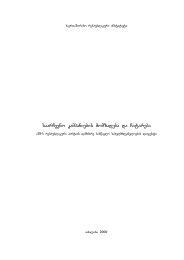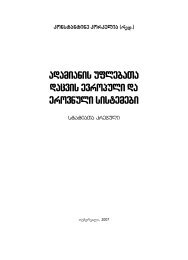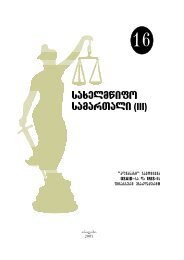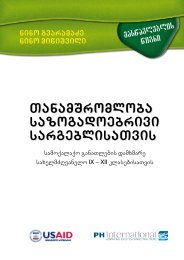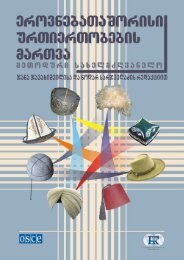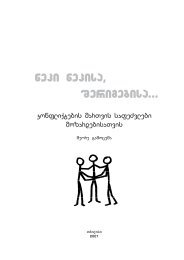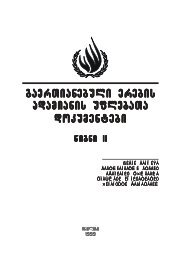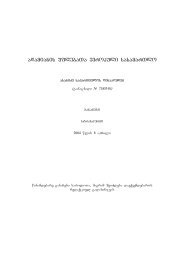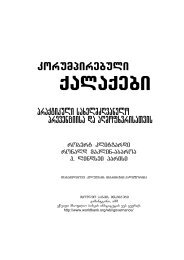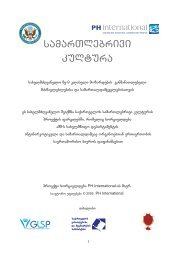The Geneva Protocol, by David Hunter Miller
The Geneva Protocol, by David Hunter Miller
The Geneva Protocol, by David Hunter Miller
Create successful ePaper yourself
Turn your PDF publications into a flip-book with our unique Google optimized e-Paper software.
CHAPTER V. 14<br />
CHAPTER V.<br />
RELATIONS INTER SE OF THE SIGNATORIES TO THE PROTOCOL.<br />
It is here assumed that only Members of the League of Nations may become parties to the <strong>Protocol</strong> of<br />
<strong>Geneva</strong>[1]; the <strong>Protocol</strong> is a development of the Covenant and it would, in any view, be logically impossible<br />
for any State, not a Member of the League, to become a Signatory to the <strong>Protocol</strong>; on the other hand,<br />
Members of the League are, of course, not obligated to sign or to ratify the <strong>Protocol</strong> of <strong>Geneva</strong>.<br />
Accordingly, if the <strong>Protocol</strong> shall come into force, the Powers of the world, from the point of view of the<br />
<strong>Protocol</strong>, will, at least theoretically, be divided into three classes:<br />
1. Members of the League of Nations who are parties to the <strong>Protocol</strong>.<br />
2. Members of the League of Nations who are not parties to the <strong>Protocol</strong>.<br />
3. Non-Members of the League of Nations who are not parties to the <strong>Protocol</strong>.<br />
From this it follows, again looking at the matter from the point of view of the <strong>Protocol</strong> of <strong>Geneva</strong>, that the<br />
international relations of the various countries of the world would fall into the following six classes:<br />
1. Relations inter se of the Signatories to the <strong>Protocol</strong>.<br />
2. Relations inter se of the Members of the League not Signatories to the <strong>Protocol</strong>.<br />
3. Relations inter se of non-Members of the League.<br />
4. Relations of the Signatories to the <strong>Protocol</strong> with the Members of the League not Signatories thereto.<br />
5. Relations of Members of the League not Signatories to the <strong>Protocol</strong> with States non-Members of the<br />
League.<br />
6. Relations of the Members of the League Signatories to the <strong>Protocol</strong> with States non-Members of the<br />
League.<br />
{14}<br />
It is proposed in this discussion first to consider the first of the above six classes, namely, the relations of the<br />
Signatories to the <strong>Protocol</strong>, inter se; and this discussion will proceed primarily on the assumption that the<br />
obligations of the <strong>Protocol</strong> are carried out.<br />
In numerous places the <strong>Protocol</strong> speaks of the parties thereto as "the signatory States," e. g., Articles 1, 2, 3, 8,<br />
11, etc. It is curious this is so in view of the meticulous insistence <strong>by</strong> the British Dominions at the Peace<br />
Conference, on the use, throughout the text of the Covenant generally, of the expression "Members of the<br />
League" instead of "States Members of the League."[2]<br />
Certainly it is contemplated that ratification of the <strong>Protocol</strong> may be made on behalf of the British Dominions.<br />
Accordingly, I think that the use in the <strong>Protocol</strong> of the expression "signatory States" is probably an<br />
inadvertence, as in no proper international sense of the word are the British Dominions States, despite the fact<br />
that they have an international status under the League of Nations and even otherwise.[3]


